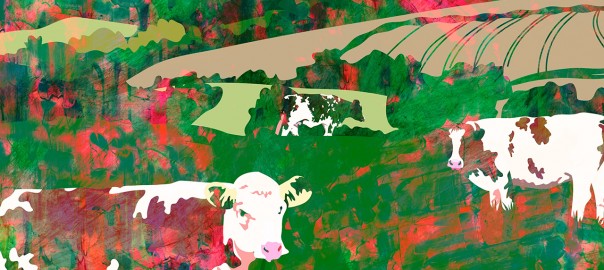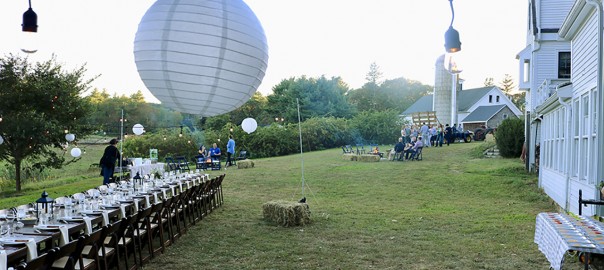Let me explain to you how one small change can cascade into a massive problem for a young company.


Let me explain to you how one small change can cascade into a massive problem for a young company.

A little more than two years ago, we started ButcherBox in the offices of a friend’s Cambridge creative agency. We have grown exponentially since then — we now have more than 25 employees in Harvard Square and elsewhere across the country. Proudly, we still haven’t had to take any money from venture capitalists or other institutional investors.
From the beginning, ButcherBox has been a project of passion. I will get into that more a bit below, but basically, two forces — family and health — led the groundwork for what has become the company that our amazingly loyal customers have grown to know and love.
Initially, it was a health problem my wife developed that drove me to learn more about the potential benefits of more humanely-raised meats — grass-fed beef, heritage-breed pork, free-range chicken. A few years back, she developed a thyroid issue. One of the suggestions to improve her health was to look into adding cleaner foods to our diets. Over and over again, we kept discovering grass-fed beef popping up on lists of foods it was suggested we add to our diets. We did more research on the topic and soon started eating grass-fed beef.
The other major influence that led to ButcherBox’s founding was the birth of my children. Knowing we wanted them to eat healthier from the start, I set out to find ways get quality, humanely-raised meat in a way that was affordable for a family. This led to my first involvement in a cow share and eventually to the realization that a lot of people wanted grass-fed beef and similar meats but didn’t have access to them.
These experiences are why ButcherBox exists today.
To be clear, the reasons my co-founder, Mike Filbey, and I founded ButcherBox haven’t changed. This fundamental part of our story remains solid. It is, after all, our foundation.
However, as we have grown, I have been thinking more deeply about the story that is ButcherBox, and, strangely, I have discovered that it was quite inevitable — more than I had realized — that I’d spearhead an endeavor promoting healthy, humanely-raised meat.
First, and I don’t know how better to explain this, but I have been surrounded by cattle — smiling, grazing in fields, peaceful — my entire life.
On a recent visit to my mother’s house, something struck me that I had never thought about before. You see, my mother’s home is — and has been for as far back as I can remember — decorated, floor to ceiling, with cows. There are cows on kitchen decorations, pictures of cows, and more.
I believe our home has been this way since my mother immigrated — with my three siblings and me — from Uraguay to the United States when I was a mere six-months-old. Uruguay is one of the grass-fed beef capitals of the world, and, quite possibly, this is the inspiration for my mother’s decorative leanings. My father still lives in Uruguay, and that country has always called to me.
In some way, this has subconsciously impacted a lot of my choices. Believe it or not, I have a large painting of a cow displayed in my bedroom. It has been there since well before ButcherBox was a thing.
While the overall influence of cow-laden aesthetical decisions of my family may not be as personal as the two reasons mentioned above, I can’t deny that being surrounded by calming cattle art didn’t somehow serve as a bias towards being an advocate for more humane cattle industry practices.
This idea that there is a better way, for consumers and cattle, is also something that I have been thinking about for a lot longer than I realized.
Trying to find healthier meats for my wife and children was, without a doubt, the main catalyst for the birth of ButcherBox. But it has also been part of my business ethos, whether I realized it or not, that there is something fundamentally incorrect with how specific industries treat their products, and then how this impacts consumers relationship with those products and industries. This too is part of the founding story of ButcherBox.
Recently, I was looking over a slide deck from when I pitched my former company, CustomMade, to investors. One of the slides quickly caught my eye. I had completely forgotten about the slide, but it featured two cows. One was a cow on a feedlot; the other was a cow grazing in an open field.
We had used this slide as a way to explain what we thought about the marketplace for creatives and craftspeople. For CustomMade, we wanted to highlight how consumers in the digital age wanted to know the story behind what they were purchasing. This shift was occurring in the food industry well before ButcherBox’s founding, and we highlighted the parallels to the craft industry for CustomMade.
As we saw it, more consumers better understood that the state of feedlots was a miserable existence for the products they were purchasing, when it comes down to it, for the pleasurable experience of eating a steak. The happier cattle on the range was more in line with the overall story that makes consumers feel better about the meat they are buying.
Rediscovering the slide again made me realize how the concept product storytelling — specifically, giving customers the products that align with their beliefs — has been a priority in my business life for a long time. It took the old pitch deck to help me make the connection.
Why do I tell these stories?
Businesses — the ones that people can get passionate about — aren’t borne out of thin air. The stories of how they came into existence tell a lot about the people that built them and where they are going.
For ButcherBox, the cornerstones of our mission are health and family. This permeates all we do, from how we hire to how we treat our customers. But there are other key values built into the foundation of the company. One is making others happy, bringing joy in some way. I was reminded of this by returning to my mother’s cow-filled home. The other is that we are on a mission to improve the world. The slide deck from CustomMade brought home this part of our story.
As we grow, more and more people will contribute to the company and they too will add their own positive influences to the ButcherBox story. That’s the only way to build something that can truly resonate.

On Thursday evening, ButcherBox invited a few of our most loyal and long-standing Boston-area customers to a small farm in Lincoln, Massachusetts, for a special multi-course dinner designed by our in-house chef, Yankel Polak.
With a perfect early-fall sunset as a backdrop, all in attendance were treated to an incredible culinary experience as we paired some of our favorite ButcherBox cuts with beef from Matlock Farms — our host for the night — along with some great wine and New England craft beer and cider.
“We wanted to do an ‘Outstanding in the Field‘-style dinner for our members so we could get some awesome photos, tell our members how much they mean to us, and learn about what they want and need,” said ButcherBox’s co-founder and CEO Mike Salguero.
“It was great to be able to do it at Matlock, a farm that was started in 1635 and has been passed down through 12 generations of farmers,” he added.
The atmosphere was ideal for discussions on what makes ButcherBox so great and how we can improve our customers’ experiences. The glow and heat from the campfires set up near the grazing Belted Galloways — Matlock’s signature breed of cattle from the Galloway district of Scotland — paled in comparison to the warmth felt among the guests and ButcherBox team members.
Some of the suggestions from our customers included requests for more products, such as lamb and fish, and improvements to packaging (something we already have in the works).
“We heard some great comments on the ease of use of our service and the incredible taste of our meat,” said Mike. The food, as expected, was the focus. And, with Chef Yankel at the helm, the entire dining experience was unforgettable.

As Chef Yankel explained, a lot of thought went into every detail. “The food was sort of a conglomeration of who I am, paired with the needs of the event.”
For our chef, that meant choosing the centerpiece proteins first. In the case of this event, that meant selecting two items that would make use of the Matlock farm beef, while the rest would involve his favorite ButcherBox cuts.
“I began by thinking about pairing these meats with appropriate flavors,” Yankel explained. “Two elements drove ingredient choices: Location and seasonality. The combination of our location, a local farm in the rustic town of Lincoln (which is only 20 minutes outside Boston but feels a world apart) and the early fall, led to my selection of jams and apples, cheeses and sausages, cornbread and hearth roasted onions.”
Chef Yankel got personal with the dishes, too. He says he created the menu from what makes him smile, what reminds him of childhood, and what tastes of nostalgia and comfort.
“The menu drives the event,” he added.
As our guests arrived, mingled, and took in the picturesque farm, they were treated to an array of appetizers that included a “Matlock Meatball” with the farm’s own beef in a smoky-sweet sun-dried tomato sauce. There was also ButcherBox filet mignon paired with orange and nutmeg-dusted shallot jam, crispy onions, and parsley, as well as other small dishes featuring ButcherBox Italian sausage and ButcherBox bacon jam.

Sitting down at an extra-long farmhouse table under strings of lights and paper lanterns, the dinner party was greeted by a plated salad made up of local lettuces, green vegetables, heirloom tomatoes, and Matlock Farm harissa beef merguez.
After the salad course, Chef Yankel and his amazing staff served up a family-style meal centered on ButcherBox New York strip steaks marinated with coriander, lime, cilantro, and garlic EVOO, as well as ButcherBox boneless and skinless herb-marinated chicken thighs, accompanied by grilled vegetables, grilled corn with chipotle butter and lime, herb and vinegar potato salad, and cornbread with grass-fed butter.
It was as mouth-watering as it sounds. As the summer-like day faded into a crisp autumn evening, our guests and the ButcherBox team shared a few more stories (and some savory maple bacon-infused whoopie pies).
All in attendance were enriched by both Chef Yankel’s culinary creations and the great company. It was truly a one-of-a-kind customer experience.
 Delivered to Your Door
Delivered to Your Door Free Shipping
Free Shipping Cancel Anytime!
Cancel Anytime!